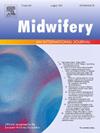社会经济剥夺是死产的危险因素:一项病例对照研究
IF 2.5
3区 医学
Q1 NURSING
引用次数: 0
摘要
死产对家庭来说是一种毁灭性的结果。识别和处理风险因素至关重要。贫困程度与包括死产在内的不良围产期结局有关。方法采用观察性病例-对照研究,将死产病例(127例)与活产对照队列(266例,比例为2:1)进行配对。从爱尔兰共和国的一家三级产科病房收集了2018-2021年孕产妇特征、妊娠细节和新生儿结局的回顾性数据。全球HP剥夺指数用于将小区域划分为剥夺程度。产妇年龄、胎次、BMI、预约妊娠被认为是潜在的混杂因素。统计分析采用SPSS,包括:描述性统计、卡方检验、t检验。使用Logistic回归进行粗分析和多变量分析,包括优势比计算,以确定剥夺水平和混杂因素类别之间死产风险的差异。结果在该样本中,剥夺程度与死产风险之间无统计学意义的相关性(p = 0.288)。当重新调整到贫困的五分位数时,在更贫困的水平上,死产的比例略高,尽管没有统计学意义。当检查死亡原因时,剥夺与胎盘死亡原因之间存在显著关联(p = 0.048)。高BMI一直与死胎有关,而预约妊娠较晚和高龄产妇也显示出相关。结论:这项研究没有发现剥夺与死产之间的明确联系,但观察到剥夺五分之一的胎盘相关死产较高,强调需要进一步的国家研究。本文章由计算机程序翻译,如有差异,请以英文原文为准。
Socioeconomic deprivation as a risk factor for stillbirth: A case-control study
Background
Stillbirth is a devastating outcome for families. Identifying and addressing risk factors is of crucial importance. Level of deprivation has been linked to adverse perinatal outcomes, including stillbirth.
Methods
An observational case-control study was conducted, matching cases of stillbirth (n = 127) with a control cohort of live births (n = 266, ratio 2:1). Retrospective data on maternal characteristics, pregnancy details and neonatal outcomes from 2018–2021 was collected from a tertiary maternity unit in the Republic of Ireland. The Pobal HP Deprivation Index was used to categorise small areas into levels of deprivation. Maternal age, parity, BMI, booking visit gestation were considered potential confounding factors. Statistical analysis using SPSS, included: descriptive statistics, Chi-squared tests, T-tests. Logistic regression for crude and multivariate analysis, including odds ratio calculations, were used to identify differences in risk of stillbirth across the deprivation levels and categories of confounding factors.
Results
The results demonstrated no statistically significant correlation between level of deprivation and risk of having a stillbirth (p = 0.288) in this sample. When readjusted into quintiles of deprivation, a slightly higher representation of stillbirth was noted in the more deprived levels, though not statistically significant. When examining by cause of death, there was a significant association between deprivation and placental causes of death (p = 0.048). High BMI was consistently associated with stillbirth, while late booking visit gestation and advanced maternal age also showed associations.
Conclusions
This study found no clear link between deprivation and stillbirth but observed higher placental-related stillbirth in deprived quintiles, emphasising the need for further national research.
求助全文
通过发布文献求助,成功后即可免费获取论文全文。
去求助
来源期刊

Midwifery
医学-护理
CiteScore
4.50
自引率
7.40%
发文量
221
审稿时长
13.4 weeks
期刊介绍:
Midwifery publishes the latest peer reviewed international research to inform the safety, quality, outcomes and experiences of pregnancy, birth and maternity care for childbearing women, their babies and families. The journal’s publications support midwives and maternity care providers to explore and develop their knowledge, skills and attitudes informed by best available evidence.
Midwifery provides an international, interdisciplinary forum for the publication, dissemination and discussion of advances in evidence, controversies and current research, and promotes continuing education through publication of systematic and other scholarly reviews and updates. Midwifery articles cover the cultural, clinical, psycho-social, sociological, epidemiological, education, managerial, workforce, organizational and technological areas of practice in preconception, maternal and infant care.
The journal welcomes the highest quality scholarly research that employs rigorous methodology. Midwifery is a leading international journal in midwifery and maternal health with a current impact factor of 1.861 (© Thomson Reuters Journal Citation Reports 2016) and employs a double-blind peer review process.
 求助内容:
求助内容: 应助结果提醒方式:
应助结果提醒方式:


